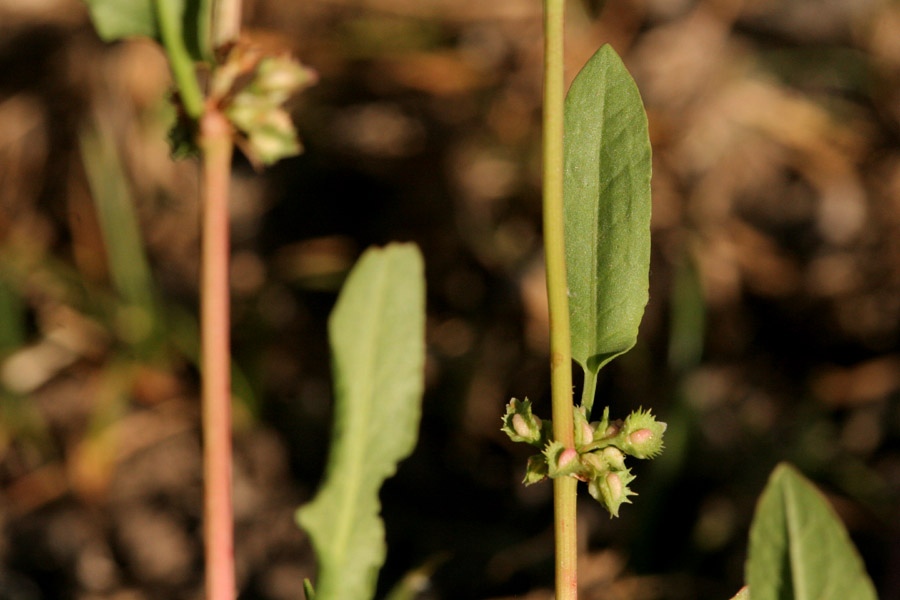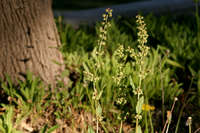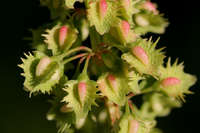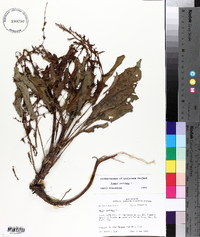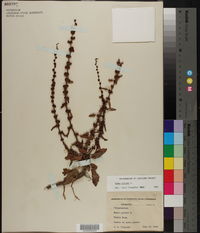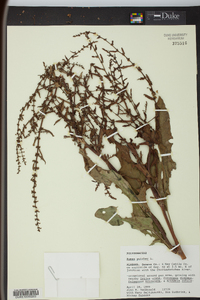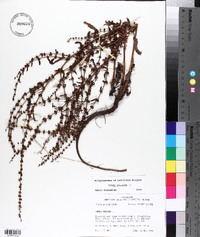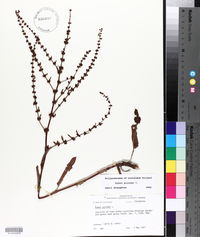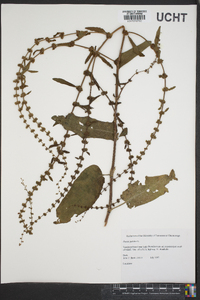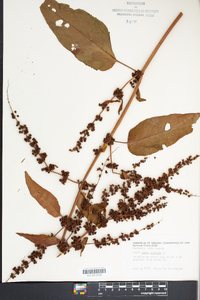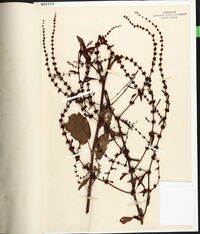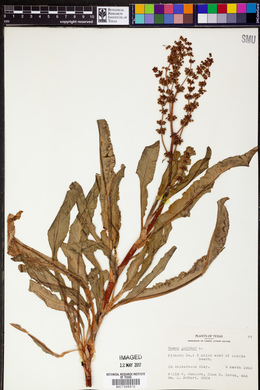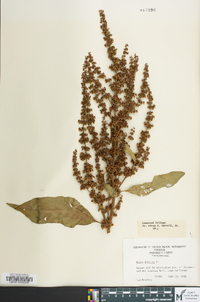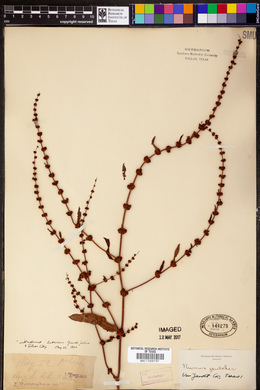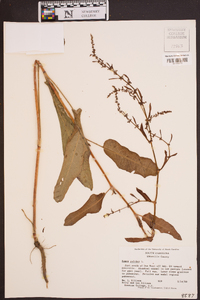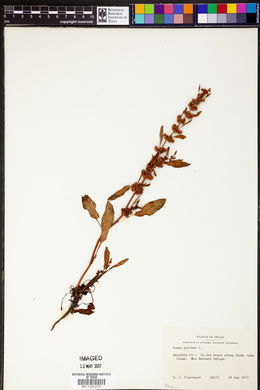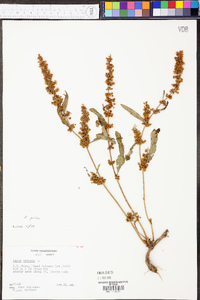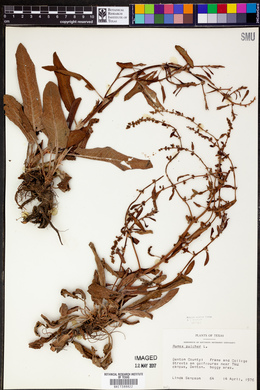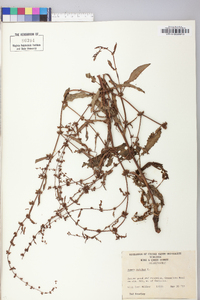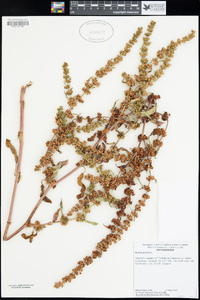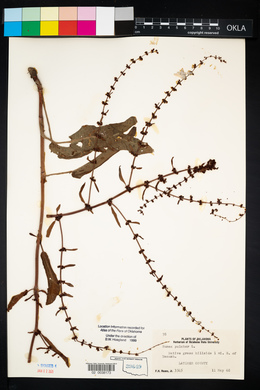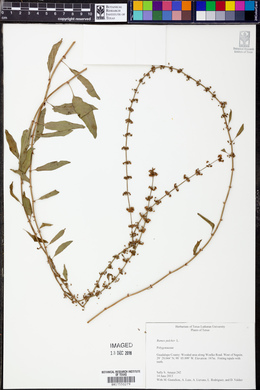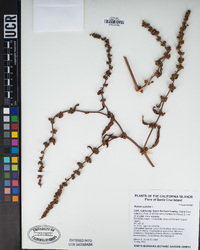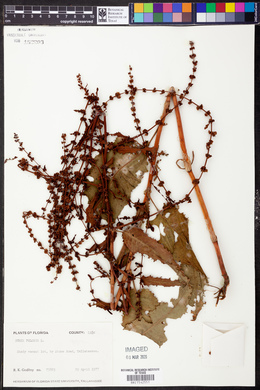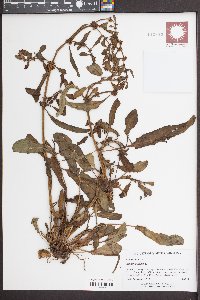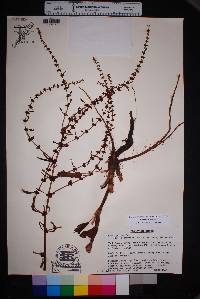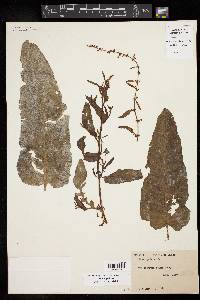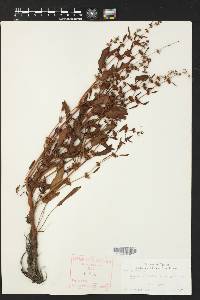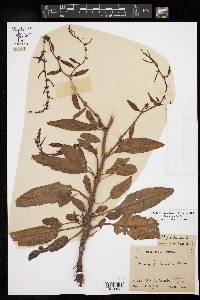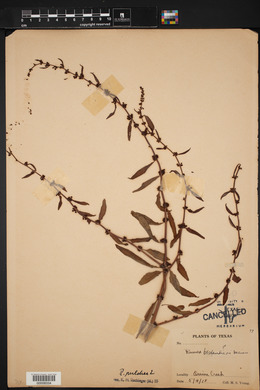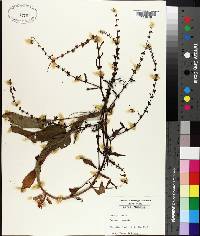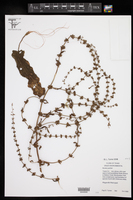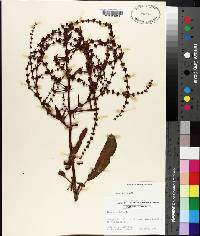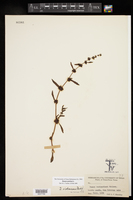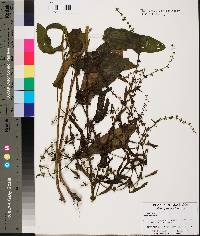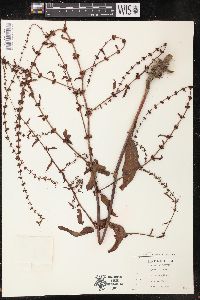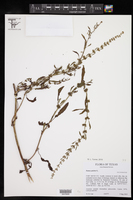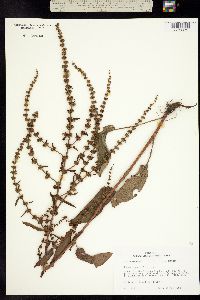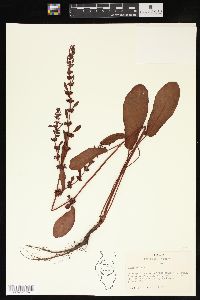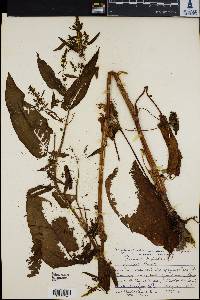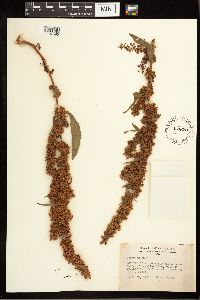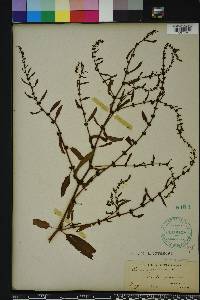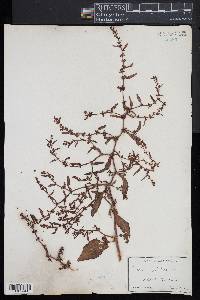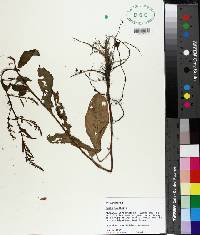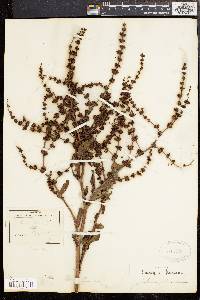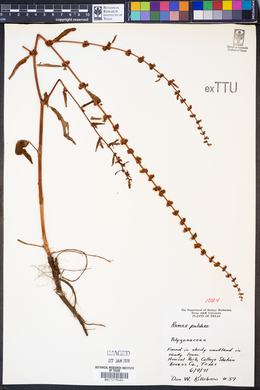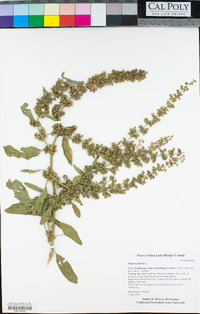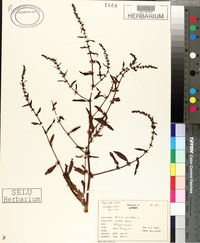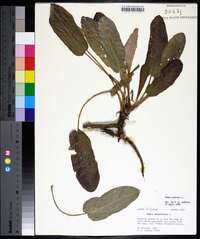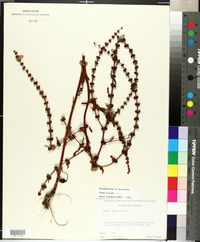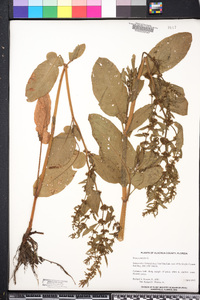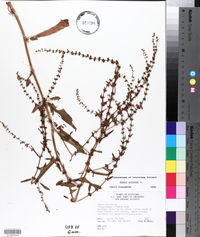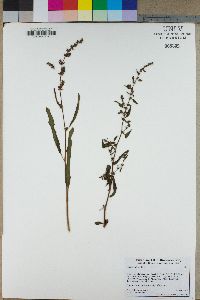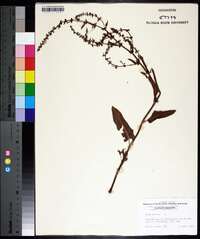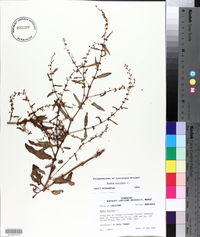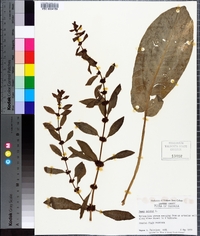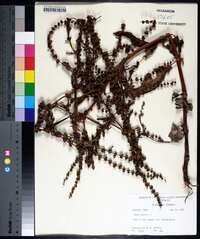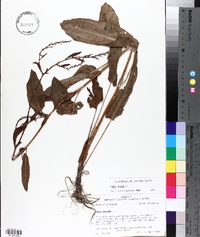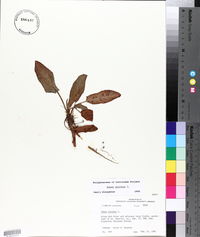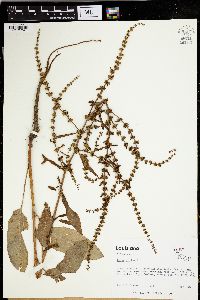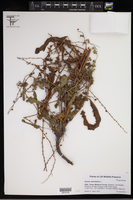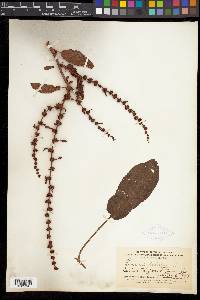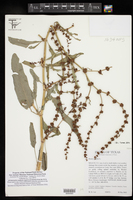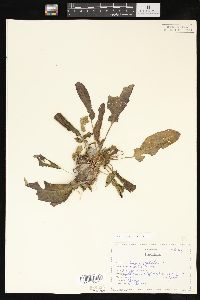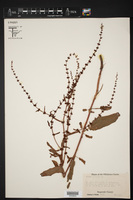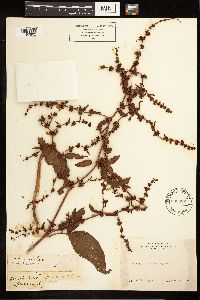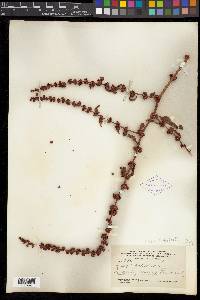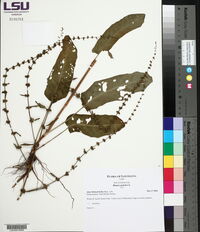
|
|
|
|
Family: Polygonaceae
Fiddle Dock
[Rumex pulcher subsp. divaricatus (L.) Murb., moreRumex pulcher var. divarticatus (L.) Murb., Rumex pulcher var. pulcher L.] |
Plants perennial, glabrous or distinctly papillose especially on veins of leaf blades abaxially, with fusiform, vertical rootstock. Stems erect, often flexuous in distal part, branched in distal 2/ 3, occasionally almost from base, 20-60(-70) cm. Leaves: ocrea deciduous or partially persistent at maturity; blade oblong to ovate-oblong, sometimes broadly lanceolate or panduriform, contracted near middle or proximally, 4-10(-15) × (2-)3-5 cm, less than 4 times as long as wide, base normally truncate or weakly cordate, occasionally rounded, margins entire, flat or undulate, rarely slightly crisped, apex obtuse or subacute. Inflorescences terminal, occupying distal 2/ 3 of stem or more, usually lax and interrupted, broadly paniculate, branches usually divaricately spreading, forming angle of 60-90° with 1st-order stem. Pedicels articulated in proximal 3 or occasionally near middle, thickened, not filiform, 2-5(-6) mm, articulation distinctly swollen. Flowers 10-20 in rather dense whorls; inner tepals ovate-triangular, deltoid, or oblong-deltoid, 3-6 × 2-3 mm (excluding teeth), normally ca. 1.5 times as long as wide, base truncate, margins usually distinctly dentate, rarely subentire, apex obtuse to subacute, straight, teeth 2-5(-9), normally on margins at each side, narrowly triangular, 0.3-2.5 mm, longer or shorter than width of inner tepals; tubercles (1-)3, equal or unequal, usually verrucose (warty). Achenes dark reddish brown to almost black, 2-2.8 × 1.3-2 mm. 2n = 20. Flowering late spring-summer. Waste places, roadsides, shores, fields, meadows, moist to dry habitats; 0-1500 m; introduced; Ala., Ariz., Ark., Calif., Fla., Ga., Ky., La., Md., Mass., Miss., Mo., Nev., N.J., N.Y., N.C., Okla., Oreg., Pa., R.I., S.C., Tenn., Tex., Va., W.Va.; s, w Europe; sw Asia; n Africa; introduced elsewhere. Rumex pulcher is an extremely polymorphic species consisting of five or six more or less distinct subspecies (K. H. Rechinger 1949, 1964). Three of these were reported by Rechinger (1937) from North America: subsp. pulcher; subsp. woodsii (De Not.) Arcangeli [= Rumex divaricatus Linnaeus]; and subsp. anodontus (Haussknecht) Rechinger f. Judging from herbarium specimens, subsp. woodsii seems to be the most common. However, J. E. Dawson (1979) noted that many North American specimens cannot easily be assigned to any subspecies. Some records require confirmation, especially from the midwestern states, since Rumex pulcher often is confused with other species with dentate inner tepals. Records from Colorado (H. D. Harrington 1954) belong to R. stenophyllus (W. A. Weber and R. C. Wittmann 1992).
Slender, branching perennial 2-8 dm from a taproot; lvs basally disposed, the lower commonly constricted just above the cordate base, hairy on the petiole and veins beneath; infl very large, with many divergent spike-like branches, the glomerules separate, mostly subtended by reduced lvs; pedicels stout, conspicuously jointed, about as long as the fr; valves triangular- ovate, 4-5 mm, conspicuously reticulate, each with 2-6 spinose teeth on each margin below the middle; fully developed grain 1, verrucose, the other valves bearing imperfect small grains; 2n=20. Native of Europe, intr. in waste places from N.Y. to Fla., Okla., and Tex., and on the Pacific coast. Gleason, Henry A. & Cronquist, Arthur J. 1991. Manual of vascular plants of northeastern United States and adjacent Canada. lxxv + 910 pp. ©The New York Botanical Garden. All rights reserved. Used by permission. |
This project was made possible in part by the Institute of Museum and Library Services [MG-70-19-0057-19].
Powered by Symbiota

